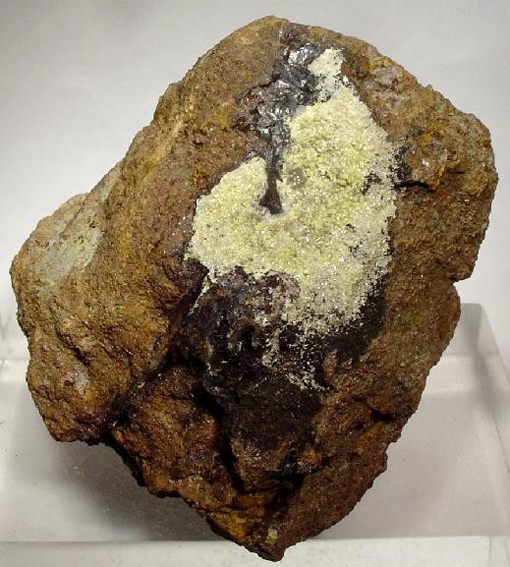The Mineral iodargyrite

Iodargyrite is an
ore of silver, and is very similar to
Chlorargyrite and
Bromrargyrite. Iodargyrite contains the
halogen iodine combined with silver, whereas Chlorargyrite contains chlorine, and Bromargyrite contains bromine. Iodargyrite is usually lighter in color than the other two.
Iodargyrite is named after its chemical composition: "iod" for iodine, and "argyros" for the Greek word used for silver.
Color
Colorless, light yellow, beige, greenish yellow, and light gray
Properties
Streak
White to yellowish-white |
Hardness
1.5 - 2 |
Transparency
Transparent to translucent |
Specific Gravity
5.5 - 5.7 |
Luster
Adamantine, Greasy |
Cleavage
1,1 |
Fracture
Uneven |
Tenacity
Sectile and ductile |
Crystal Habits
As tabular or prismatic crystals which are usually in groups of small crystals. Also as barrel-shaped forms, in parallel or disjoined crystal groups, as rosettes, drusy, grainy, and massive. Crystals may be hemimorphic with different shapes on each side.
Uses
Iodargyrite is an ore of silver.
Noteworthy Localities
Iodargyrite is a very uncommon mineral. Its most well-known locality is Broken Hill, New South Wales, Australia. Well-formed micro-crystals of this mineral have also come from Échassières, Allier, France; Vrančice, in Příbram, Bohemia, Czech Republic; and the Clara Mine, Oberwolfach, Baden-Württemberg, Germany; and the Schöne Aussicht Mine, Dernbach, Rhineland-Palatinate, Germany. Bright yellow microcrystals associated with Cuprite have recently been coming from the Rubtsovoskoe Mine, near Poteryaevka, Altai, Russia.